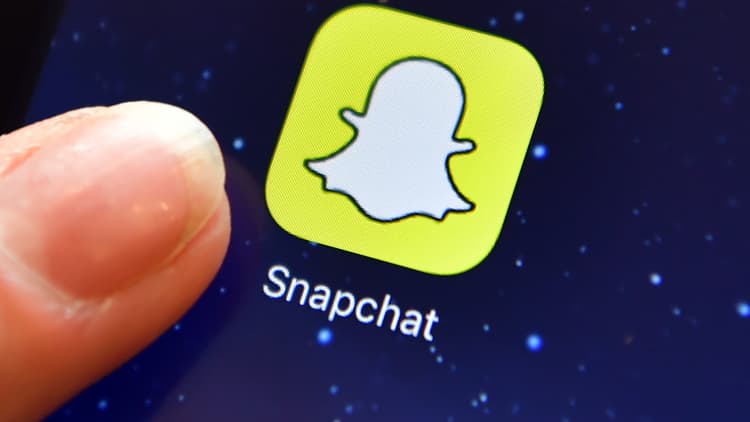
Snapchat parent Snap filed to go public today. Will it fly or die?
History doesn't give a clear answer. Until now, the social media category has been a tale of two companies, Facebook and Twitter. Their stories are very different.
Facebook stock has shot up more than 240 percent since it went public in May 2012. Annual revenue and earnings per share have each grown by about sevenfold since then.
Most important, people have been flocking to the service: about 1.86 billion people use Facebook every month, the company reported in its fourth-quarter earnings call. At the end of 2011, it was 845 million. The number ticks up every quarter.
Twitter has had a rougher time. Shares are down almost 60 percent from their market debut in November 2013. Revenue has about tripled since then, but the company has never turned a profit — it reported a net loss of $290 million for the first nine months of 2016 (it won't report fourth-quarter earnings until February 9).
Twitter has also slowed way down on user growth. In the first quarter of 2015, it had 302 million average monthly users. In the third quarter of 2016, that number had risen only to 317 million, according to earnings report stats compiled by Statista.
In its filing on Thursday, Snap revealed some impressive revenue growth: it jumped almost sevenfold, from $58.7 million to $404 million, between 2015 and 2016. It also showed a pretty impressive chart of its daily active users by quarter. That number is growing at about 50 percent per year, and stood at 158 million in the fourth quarter.
Snapchat daily active users
Snap is also showing enormous losses — it lost more than $514 million last year, way more than Twitter was losing when it went public (Facebook was already profitable). Those losses are growing more slowly, on both a percentage and dollar basis, than its revenue, which is a good sign. But the only way it'll turn profitable is if revenue continues to expand a lot faster than its losses.
So growth is the key. Will Snap continue to grow like Facebook has? Or will it stall out at some point? That's what investors have to decide if they're going to make this bet.
One thing to consider is what core functions each company serves, and what the demand has been for the previous products that served those functions.
Technology companies like to portray themselves as doing something completely new, but the universe of human needs and desires is pretty constant.
For instance, Google built the world's best research library. Amazon replaced a trip to the mall or the hardware store. The iPod replaced a Discman and a bunch of CDs. The iPhone, and the PC before it, replaced a bunch of different devices that performed single functions well, packaging them all together at one convenient and relatively cheaper place.
Pigeonholing Facebook as a "social media" company is kind of meaningless. Really, it's a communications company -- specifically a many-to-many communications company (unlike mass media, which is one-to-many). It's become one of the primary ways for nearly 2 billion people to talk to each other, share photos, discuss the daily news, and so on. Its addressable market is basically anybody who uses a phone. Or writes a letter.
Twitter fills a much smaller need. It's essentially a news company. It's tried to expand into more general entertainment with things like broadcasting live NFL games, but even that's sort of a news function — it's highlighting something that's important to a lot of people, right now. Although you can communicate with people through Twitter, most don't use it that way. They're simply watching the news roll by, then commenting on it. Like yelling at the TV.
As a business, news has its peaks — especially in times of conflict or turmoil — but the addressable market is much smaller than it is for a communications business. Add up all the TV news watchers, newspaper subscribers, and so forth. That's how big Twitter could be.
So if Facebook is a telephone and Twitter's the evening news, what's Snap? The company answers that right in the S-1:
Snap's a camera.
At first blush, this doesn't look like a great business — standalone camera sales have dropped ever since smartphone cameras became good enough for most people, and action cameras like the GoPro haven't made up the difference.
But if you think about the function a camera serves for people, that's a lot more interesting. Basically, it's a way of capturing personal experiences so they can be relived again or shared with friends or the world. It's a mode of self-expression, and it can be as personal or commercial as the creator wants to make it. Like movies, or literature, or TV programs. Like any kind of visual art.
Just look at how core users are using Snapchat, competing to create "snap streaks" (consecutive days of usage), which they share with their friends. They're basically creating a long-running reality TV program of their own life.
If Snap is able to become a dominant form of personal expression like Facebook has become the dominant form of communications, that looks like a huge addressable market — basically everybody on Earth who has the means to use digital technology.
There are a lot of other factors you also have to consider, like Snap's spending on stock-based compensation, fierce competition for advertising dollars from Facebook and Google, whether the company is managed properly so it can quickly enter new markets and creating new hit products.
But to the basic question, "Can Snap keep growing?" the answer is a resounding "Yes."


